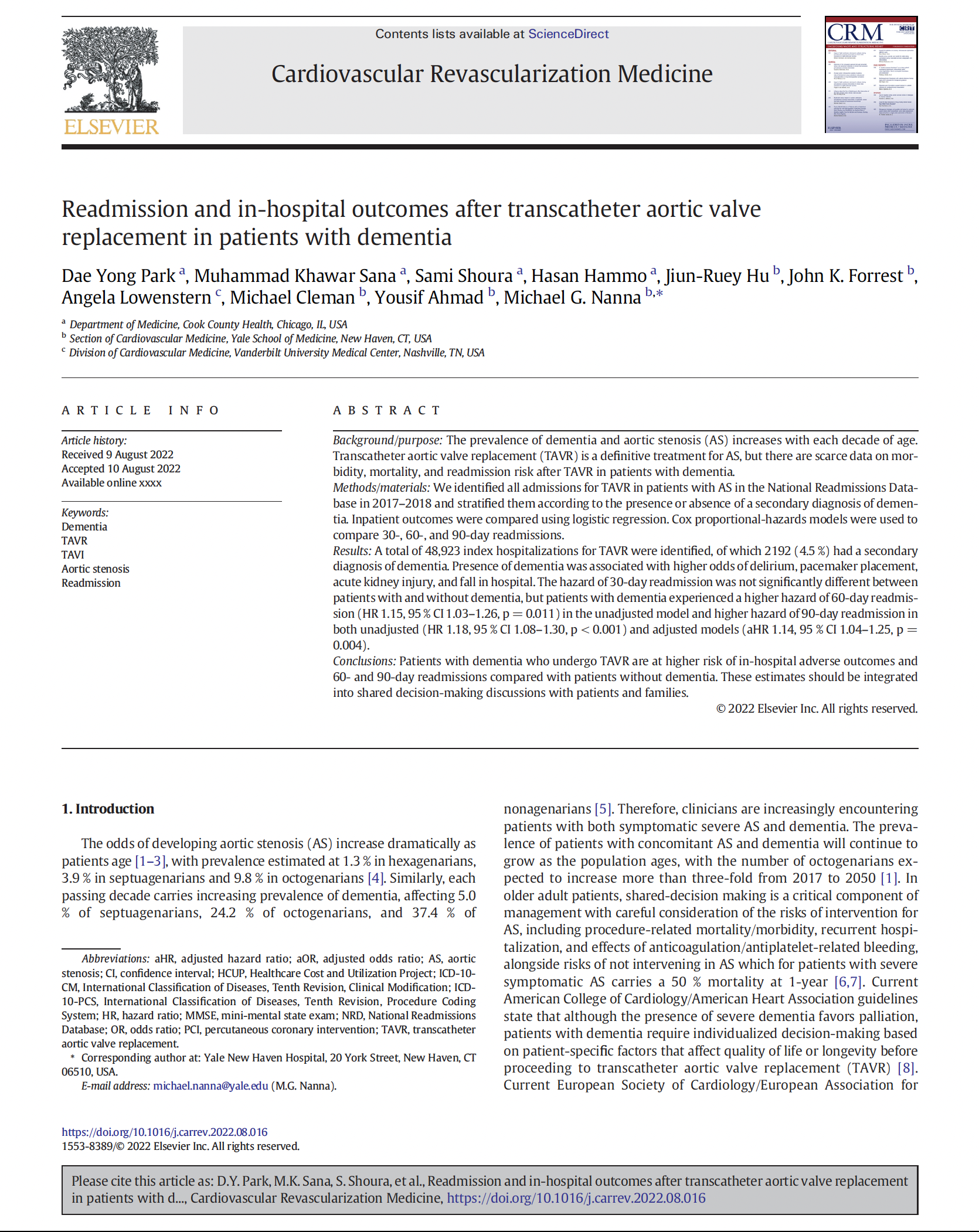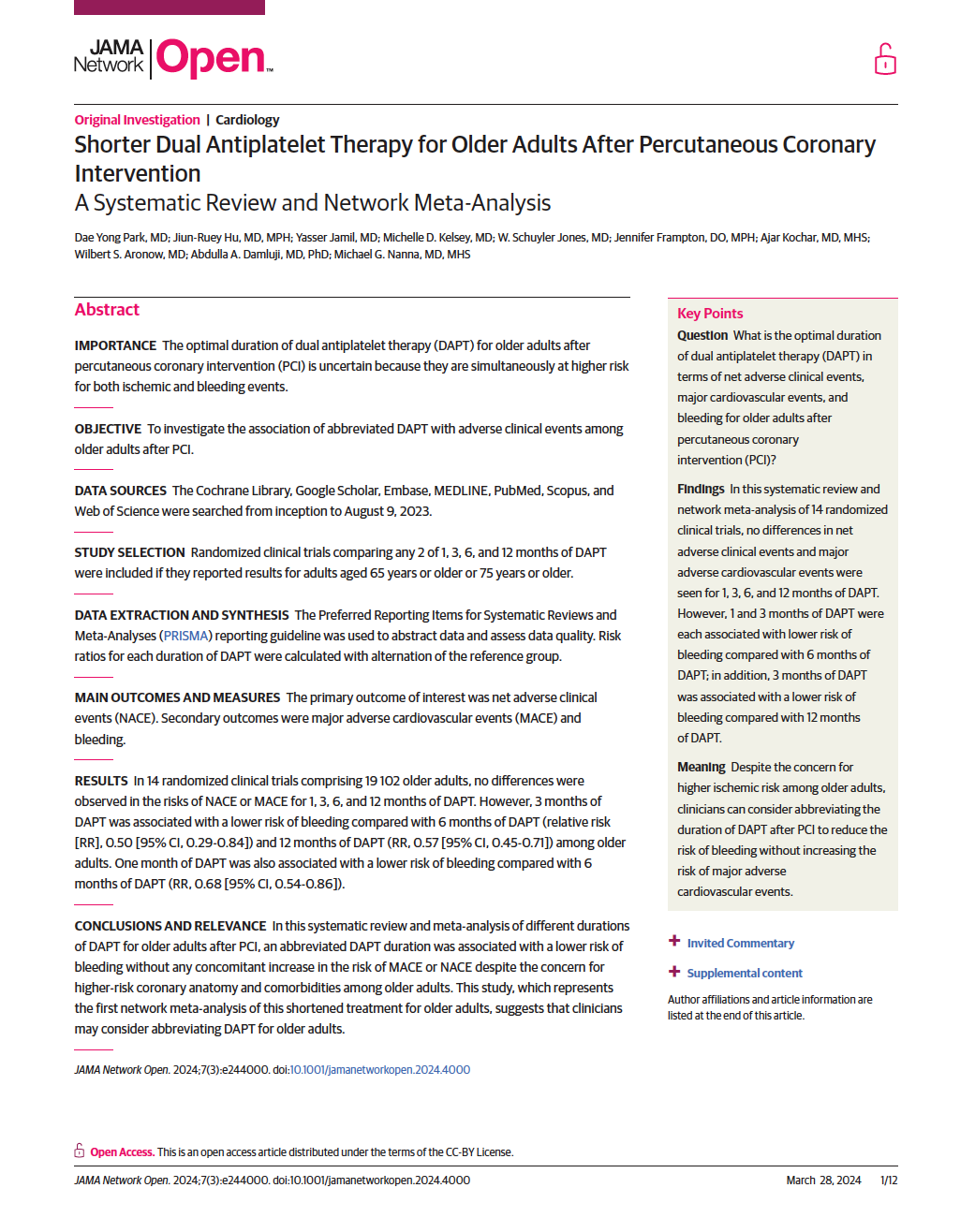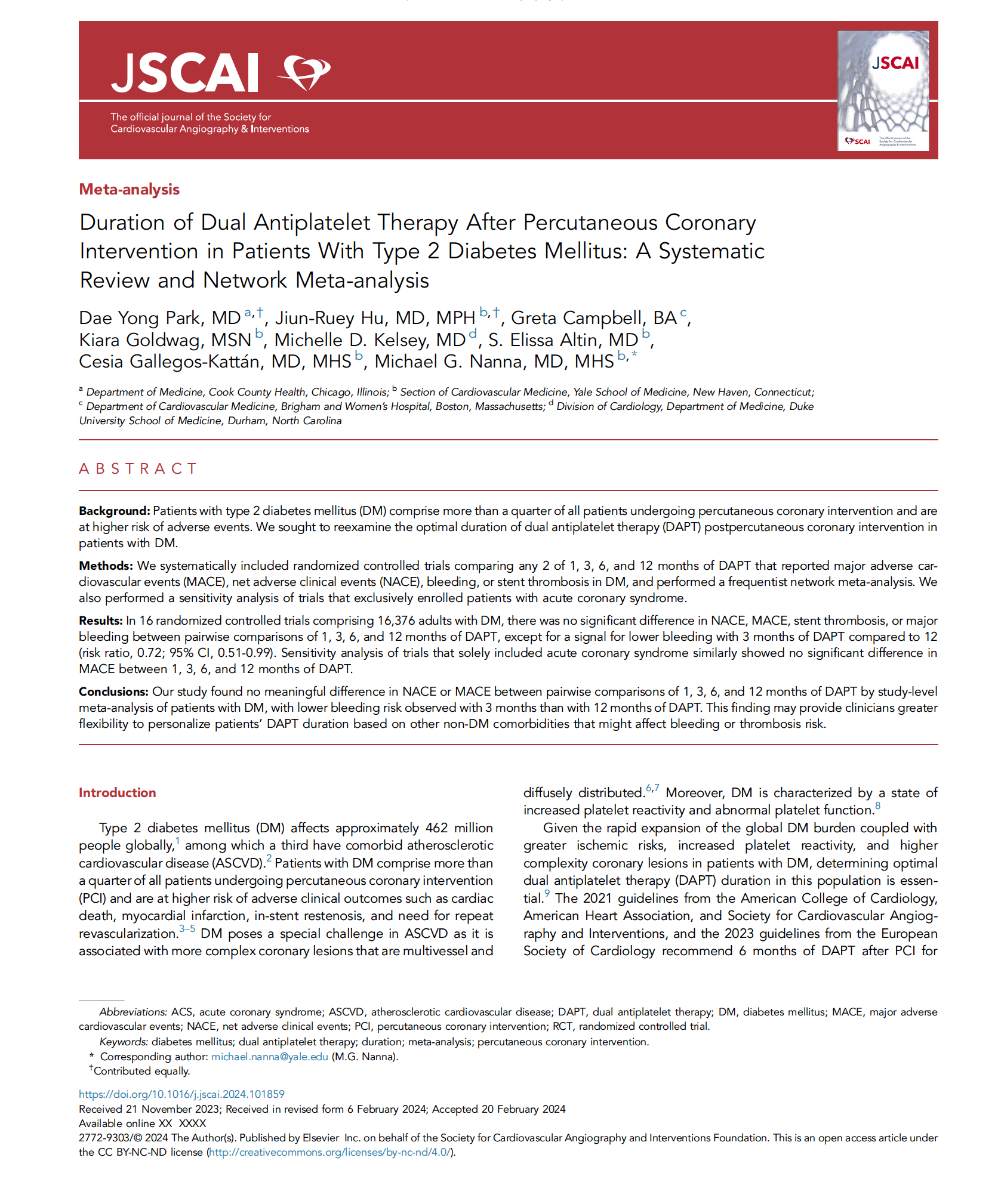📝 Abstract
Background/purpose
The prevalence of dementia and aortic stenosis (AS) increases with each decade of age. Transcatheter aortic valve replacement (TAVR) is a definitive treatment for AS, but there are scarce data on morbidity, mortality, and readmission risk after TAVR in patients with dementia.
Methods/materials
We identified all admissions for TAVR in patients with AS in the National Readmissions Database in 2017–2018 and stratified them according to the presence or absence of a secondary diagnosis of dementia. Inpatient outcomes were compared using logistic regression. Cox proportional-hazards models were used to compare 30-, 60-, and 90-day readmissions.
Results
A total of 48,923 index hospitalizations for TAVR were identified, of which 2192 (4.5 %) had a secondary diagnosis of dementia. Presence of dementia was associated with higher odds of delirium, pacemaker placement, acute kidney injury, and fall in hospital. The hazard of 30-day readmission was not significantly different between patients with and without dementia, but patients with dementia experienced a higher hazard of 60-day readmission (HR 1.15, 95 % CI 1.03–1.26, p = 0.011) in the unadjusted model and higher hazard of 90-day readmission in both unadjusted (HR 1.18, 95 % CI 1.08–1.30, p < 0.001) and adjusted models (aHR 1.14, 95 % CI 1.04–1.25, p = 0.004).
Conclusions
Patients with dementia who undergo TAVR are at higher risk of in-hospital adverse outcomes and 60- and 90-day readmissions compared with patients without dementia. These estimates should be integrated into shared decision-making discussions with patients and families.


